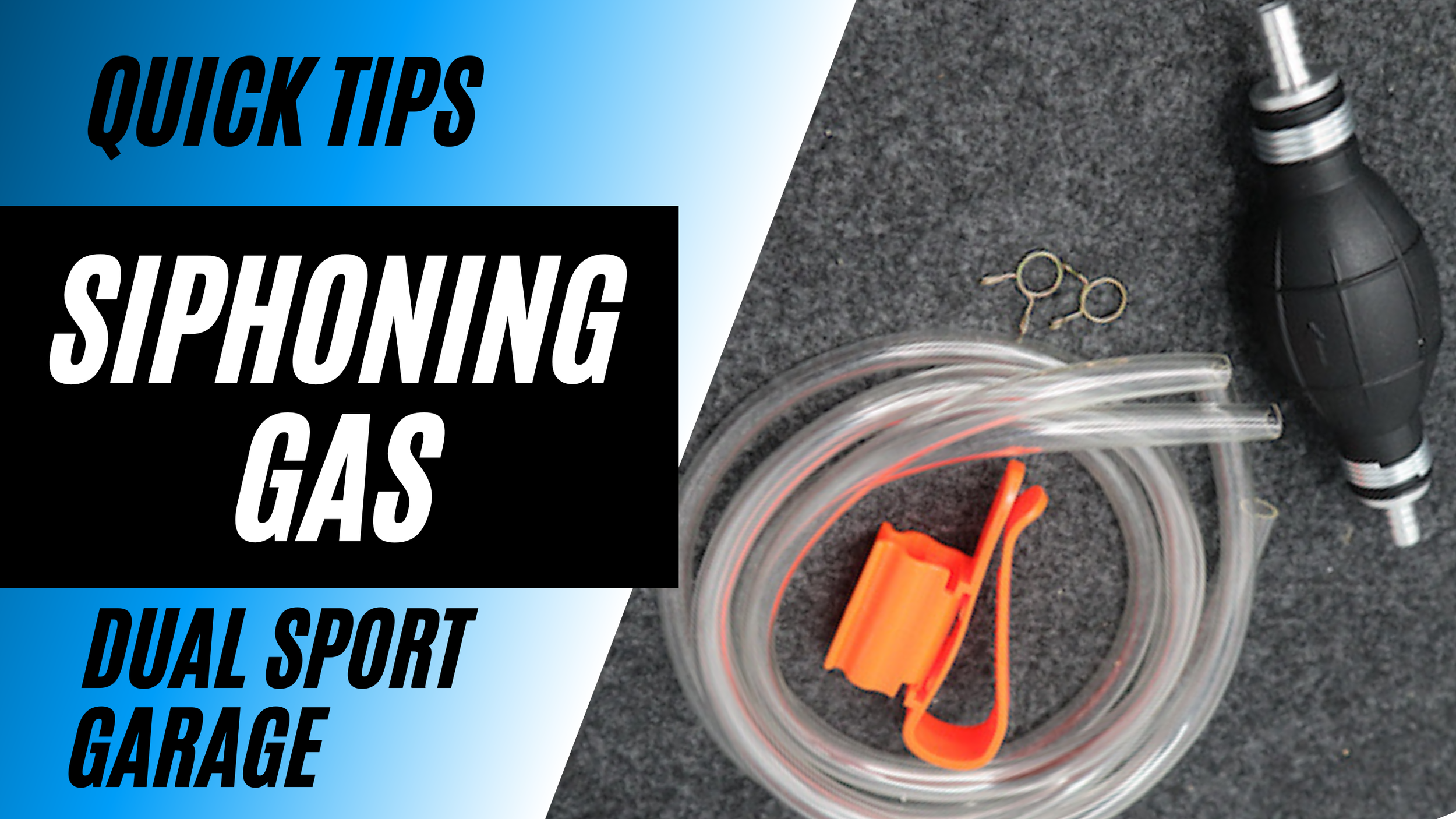Siphoning Gas
Need to siphon gasoline? No big deal right? Well, improperly siphoning gasoline the old-fashioned way can be problematic.
There is a better way.
To be clear, whether for expediency or just because there aren't any other better options at the moment, many of us one time or another are probably guilty of grabbing a hose and drawing fuel from the gas tank with a hose and our mouth. This method is very simple grab the hose, drop it in your gas tank draw the fuel up with your mouth. Once you’ve got a good amount of fuel in the hose seal it off with your thumb, and position a gas can below the level of your tank. Put the hose into the gas can, lift off your thumb, and let gravity pull the fuel into the can.
Once it starts flowing, the fuel will continue to flow until you lift the gas can up above the level of the gas tank. Pretty simple, right? Sure, but often a bit of gas ends up in your mouth, and what’s worse because you're drawing the fuel up by breathing in, gas could if you’re not careful get aspirated into your lungs. This can be quite problematic, as gasoline is very toxic and can lead to problems even days later.
Method number two is kind of creative. This method takes two lengths of hose one shorter and one longer. The longer hose will go from your fuel tank to the gas can, the shorter one will go from the fuel tank to your mouth. By blowing into the open end of the short hose, we can create pressure in the gas tank, which will force the fuel through the long hose into the gas tank gas can below. This method can be a little tricky because you need to create a proper seal at the gas cap to keep air from escaping. A rubber glove, and a rag, can be helpful at sealing off the gas cap.
A rag and a glove make this method a little easier, although it is always tricky.
This method takes a bit of practice and as you can imagine, has a couple of inherent weaknesses. The issues with this method are threefold. First, practically speaking it only works on gas caps that are not hinged. Second, getting a good seal requires a rag of some sort, which introduces the chance of contamination in your gas. Lastly, this is not easy to do and most people simply give up and resort to the first method.
Once started gravity will keep the fuel flowing, though pumping can hurry this process along, it doesn’t make a significant difference.
Method number three is affordable and reliable and above all safe. Whether you choose a manual pump or an electric pump both solutions are relatively inexpensive and will come in handy on your motorcycle and around your home. A manual pump can be had for under $10.
Perhaps the most common need for siphoning gasoline is getting old fuel out of a lawnmower at the start of the season. Not surprisingly, it’s also the most common explanation that poison control gets as it relates to gasoline mishaps. Sure it is important to change out your fuel, every couple of seasons to ensure your small engines keep running well. Just be sure you have a siphon pump handy. Whether for your bike or your small engines, it will help you get the job done quickly and safely every time.
Quick Tip Video: Siphoning Gas
Watch the live version on YouTube coming soon.
Caution: Ingesting or aspirating gasoline can be harmful and can cause serious illness, including pneumonia, respiratory arrest, coma, and death. Early treatment can be life-saving. Anyone who suspects gasoline poisoning should call Poison Control, which in the U.S. can reach at 800-222-1222.
Sources: National Library of Medicine, and National Capital Poison Center








